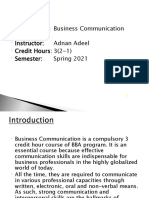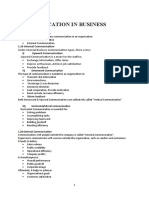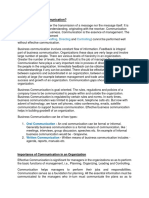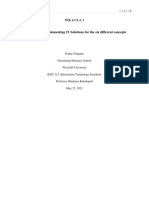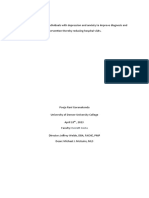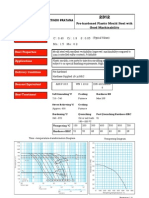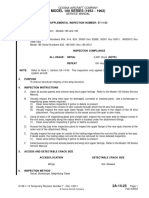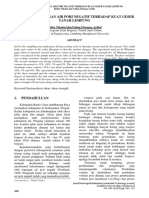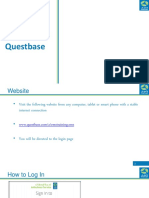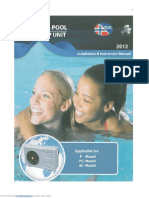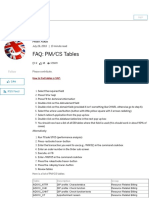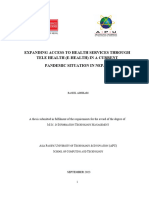0% found this document useful (0 votes)
94 views7 pagesBUSINESS COMMUNICATION Week 1 Notes
The document discusses key aspects of business communication, including:
1) It defines communication and explains its importance in organizations for establishing relationships and enabling organization.
2) Effective communication has well-defined objectives that support organizational goals and aims for understanding between parties.
3) Globalization, technology innovations, and diverse work environments have increased the importance of strong communication skills in business.
4) The communication process involves a sender encoding a message and selecting a channel to transmit it to a receiver.
Uploaded by
Tif ShawCopyright
© © All Rights Reserved
We take content rights seriously. If you suspect this is your content, claim it here.
Available Formats
Download as DOCX, PDF, TXT or read online on Scribd
0% found this document useful (0 votes)
94 views7 pagesBUSINESS COMMUNICATION Week 1 Notes
The document discusses key aspects of business communication, including:
1) It defines communication and explains its importance in organizations for establishing relationships and enabling organization.
2) Effective communication has well-defined objectives that support organizational goals and aims for understanding between parties.
3) Globalization, technology innovations, and diverse work environments have increased the importance of strong communication skills in business.
4) The communication process involves a sender encoding a message and selecting a channel to transmit it to a receiver.
Uploaded by
Tif ShawCopyright
© © All Rights Reserved
We take content rights seriously. If you suspect this is your content, claim it here.
Available Formats
Download as DOCX, PDF, TXT or read online on Scribd
/ 7















